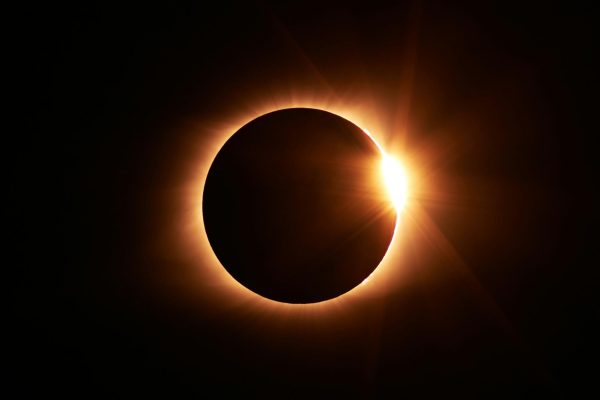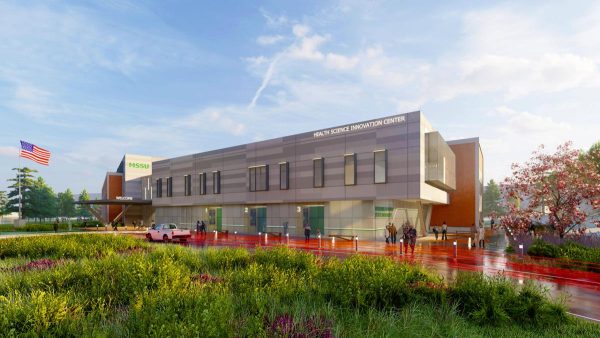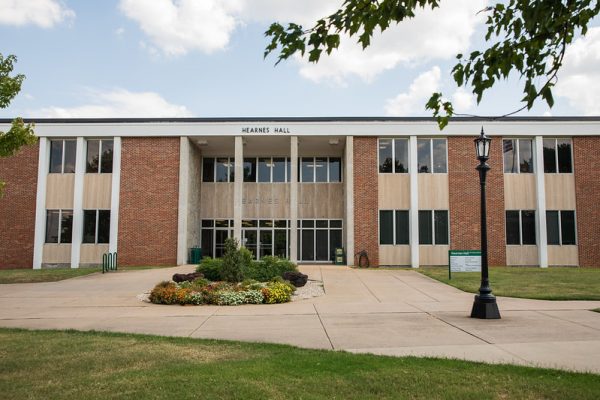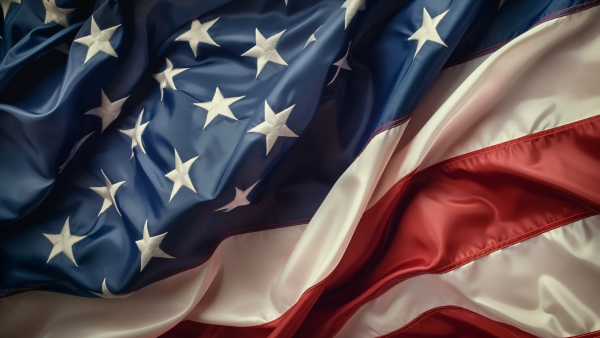Division within the American democracy
The idea of democracy comes from the brilliant minds of philosophers from long ago in ancient Athens, Greece. The word has its roots in the greek language, where “demos”, refers to the citizens or population as a whole, and ‘kratos,’ which means the strength or power to rule.
The United States of America is one of the longest standing democracies in the world. Though America established its independence in 1776, Harry Rubenstein, chair and curator of the Division of Political History at the American History Museum, said that “the symbolic birth of our system of government didn’t come until its noble ideals were actually put to the test.
On Sept. 19, 224 years ago, Washington published his farewell address, marking one the first peaceful transfers of power in American history and cementing the country’s status as a stable, democratic state,” according to the
Smithsonian Magazine.
Once Washington stepped down from office, both Federalists and Democratic-Republicans began to scramble for power, but ultimately it was up to voters in America, mostly men who owned land, to vote.
Today, America’s electoral system remains strikingly similar to how it has been in the past. Though America may have a shaky passed, we presently live in a democracy conceptualized by many of the founding fathers from years ago.
Associate Professor of Political Science, William Delehanty, said in today’s society that democracy means the ability of the public to be self-governing.
“That can mean choosing people to rule on their behalf, or rule indirectly,” said Delehanty.
“You can think of democratic governance at the personal level, as the notion that we can somehow determine our own fates.”
This means that ultimately, it is up to the American people to elect candidates who reflect their own personal ideals to govern the nation on their behalf.
This leads to the expression of beliefs between Americans, however, we as citizens are autonomous and do not always share the same beliefs.
Over time, tension has been culminating, ever since the Democratic and Republican parties became the two primarily dominant parties in the United States’ political sphere, there has been a power struggle among the right and left.
While discussing voting in America, Delehanty said that the electoral system that we have limits people’s choice, but the two political parties over time have tended to be broad and inclusive.
“The really critical question is less about the choices, but rather getting more responsiveness from the two existing parties,” said Delehanty.
“ The problem is the partisan division makes it harder for the parties to be more responsive because their tendency is to polarize.”
The two choices tend to do a really good job at representing the broad interests of American society, however, both parties are unyielding to the idea of policy change. Even when an overwhelming number of supporters voice change they would like to see toward party officials, it is not likely that immediate modifications to policy will be made.
The unwillingness from political parties to budge or respond to the American voters shows how the power has shifted from the people to the government as time passes. Whether change is made or not, voters will likely stay loyal to their party because as a whole, it reflects their ideals more than the opposition.
“The beliefs and partisan differences are the biggest source of division among Americans,” said Delehanty.
“I think it’s really clear that identifying with a political party has the effect of strongly dividing individuals on the basis of partisan differences, because it limits people’s access to information, who they speak to, and how they think about political questions.”
Many people in America whose political ideals are concrete tend to socialize and spend time with those who share the same political beliefs.
According to University of Richmond Psychology Professor, Donelson R. Forsythe, joining groups satisfies our need to belong, gain information and understanding through socializing, and define our sense of self and social identity.
When individuals socialize with only those who share the same opinion as their own, there is not much to be learned or gained, and political views begin to become a part of our self-identity.
By not collaborating with those who have opposing views, Americans are unable to discover new perspectives in regards to any given political climate.
This can be detrimental because sharing new beliefs is a way in which ideas grow, and limiting oneself to a singular group of information can explain the lack of tolerance between Democrats and Republicans.
The United States may be partly to blame for creating biases among viewers.
“There is a ‘chicken or the egg’ problem, such that the media’s job is to generate content that appeals to their consumers, and the consumers fuel the media by indulging in the content,”
said Delehanty.
“The media in that sense responds to the interests of the public, so I think it is both the public and the media that have blame”.
In the current digital age, Americans are obsessed with consuming content, especially when it involves political news.
Fox News, a widely known conservative news outlet, releases news that strictly favors Republicans, and CNN, a widely known liberal outlet covers topics that favors Democrats.
It is not likely for either media outlet to paint one another in a positive light. Delehanty said that the viewers are partially to blame, due to the audience selectively consuming content.
“There is a really strong argument to be made that the public, given their preexisting beliefs, selectively exposes themselves to certain information and not others, so in that sense, what the media is doing is being responsive in providing content to support those preexisting beliefs,” said Delehanty.
“So if the consuming public were less inclined to selectively expose, I think that we would see media companies respond to a group of people whose preferences part for that specific ideal”.
This is an example of how Americans would rather confirm their own biases by consuming media outlets that reinforce their own beliefs, than have a discussion as to why both sides have their beliefs, why they are important to the individuals, and how their beliefs impact their own lives as well as others.
One current issue that is being handled in antithetical ways is the Black Lives Matter movement in the United States. When discussing the good nature of the movement, Delehanty said the positive effects are the recognition that not all lives are being considered equally valuable, and our history clearly shows that black lives have not been equally valuable.
Though relevant more than ever, this is not the first time the Black Lives Matter movement has become a controversial topic in this decade.
The movement began in 2013, after the acquittal of George Zimmerman in the shooting death of African-American teen Trayvon Martin, 17 months earlier in February 2012.
Three years, and many more displays of police brutality towards African-Americans later, The Black Lives Matter movement gained more exposure and press when NFL players began kneeling during the national anthem in protest of inequality in America.
This story was picked up by multiple media outlets and the symbolism of the act of kneeling for the National Anthem began to be misconstrued. The media focused on how the protest by kneeling was disrespectful towards military members, past and present, rather than the original message of inequality.
Today, the message of the Black Lives Matter movement is still being twisted by many sources in the media.
Due to recent outbreaks of violence by a minority that align themselves with Black Lives Matter, the majority are losing credibility as a peaceful movement.
“Violence allows those in opposition to the movement to essentially ignore the more important moral question,” said Delehanty.
“Non-violence is the proper tactic in displaying discord to current injustices, because using violence to display contempt for injustice is counterproductive, because in ways you are acting unjust in pursuit of something you perceive to be an injustice.”
Though many are growing tired of the bridge of police brutality in America, violence as a justification is clearly not the answer towards progressing towards a more peaceful society.
Though grim, American democracy is not doomed. Despite all the current tension, there are still possibilities to mend the tension between citizens.
“Being aware and critical of your own biases, understanding the way in which you think about the political world and how you adjust your beliefs when given alternative information – having different points of view, having a bigger perspective for other people in the world – which is not always easy and trying to negotiate differences in a way that reflects the value and dignity of all people,” are all ways tensions can be mended between Americans, “and it is not always easy,” said Delehanty.
Tackling a tempestuous climate like the society of America will of course never be easy, but it must start somewhere.
Your donation will support the student journalists of Missouri Southern State University. Your contribution will allow us to purchase equipment and cover our annual website hosting costs.





























